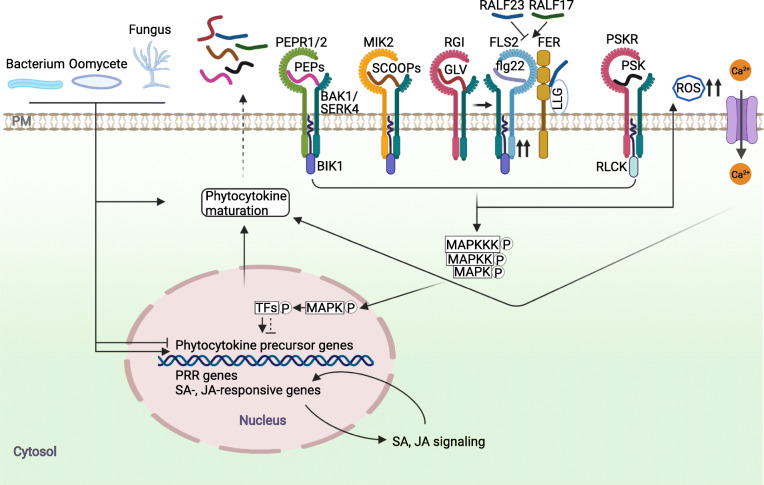Fig. 2.
A proposed model of phytocytokine-mediated regulation of plant immunity. Pathogen infections swiftly activate or inhibit the expression of phytocytokine precursor genes, or promote phytocytokine maturation. When released to the apoplast, phytocytokines are perceived by their corresponding receptor- and co-receptors. These perceptions activate ROS burst, Ca2+ influx, and phosphorylation of MAP kinase kinase kinases (MAPKKKs) mediated by BIK1 and/or related RLCKs. Ca2+ may promote phytocytokine maturation. Activated MAPKs may phosphorylate transcription factors (TFs), which further up- or down-regulate the expression of phytocytokine precursor genes and PRR genes, and SA- and/or JA-responsive genes, thus amplifying or attenuating immunity. Phytocytokine signaling may also modulate PRR complex stability and assembly. For example, the complex formation between FLS2 and RGI induced by flg22 increases FLS2 abundance, and the association between FER, FLS2, and BAK1 is promoted or inhibited by RALF17 or RALF23, thus positively or negatively regulates PTI, respectively. Due to limited space, only several of well-studied phytocytokines and their receptors are shown in this Figure

